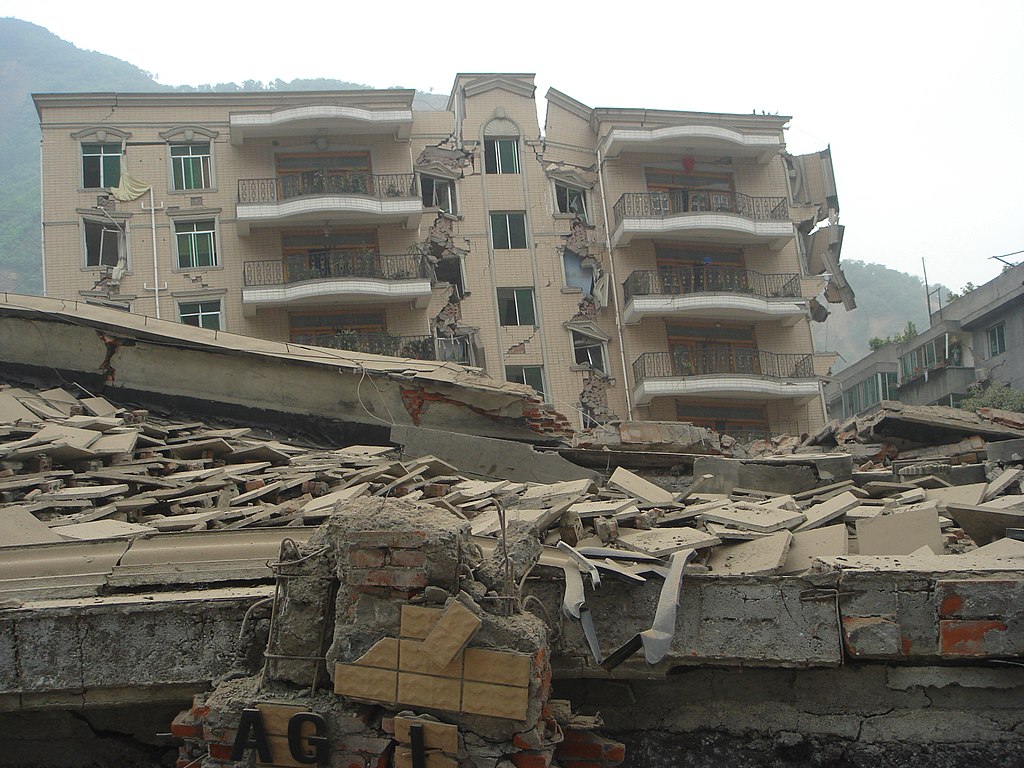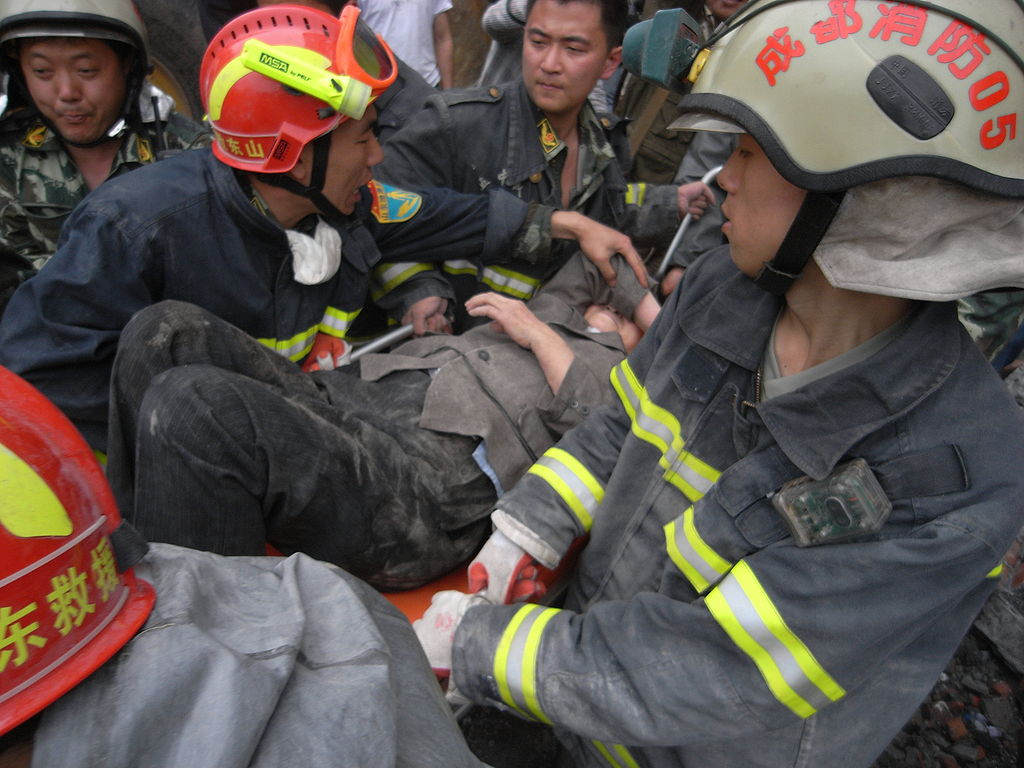12th May can be called a ‘Black Day’ in China. Today, 16 years ago, a devastating earthquake struck the Sichuan province of China, killing around 70,000 people and displacing millions. Easily, it is one of the ‘worst tragedies’ to have hit the nation.
The Sichuan earthquake of 2008 stands as a poignant reminder of the devastating power of nature and the resilience of the human spirit in the face of unthinkable catastrophe. Striking on May 12, 2008, this seismic event, also known as the Wenchuan earthquake, rocked the Sichuan province of China, leaving an unforgettable mark on the nation’s history and the lives of millions.
With a magnitude of 7.9 on the Richter scale, the earthquake unleashed massive destruction, claiming tens of thousands of lives, displacing millions, and causing immeasurable suffering. Yet, amidst the rubble and despair, stories of heroism, solidarity, and hope emerged, illuminating the path towards recovery and renewal.
Causes & Seismic Activity
The seismic activity that culminated in the 2008 Sichuan earthquake was the result of the complex tectonic forces at play in the region. The earthquake was triggered by the rupture of the Longmenshan Fault, a major geological fault line that runs through the eastern margin of the Tibetan Plateau.
The convergence of the Indian and Eurasian tectonic plates along this fault zone created immense pressure and stress over time, eventually leading to a catastrophic release of energy in the form of seismic waves.
The Wenchuan earthquake, named after the county where its epicenter was located, struck with devastating force, causing extensive ground shaking, landslides, and structural collapse.
The densely populated areas of Sichuan province bore the brunt of the impact, with towns and villages reduced to rubble within moments. The scale and intensity of the earthquake were exacerbated by the region’s topography, which consists of rugged terrain, steep slopes, and deep valleys, amplifying the destructive effects of the seismic waves.
Impact & Human Toll
The impact of the 2008 Sichuan earthquake was catastrophic, both in terms of human loss and infrastructure damage. Entire communities were devastated, with homes, schools, hospitals, and critical infrastructure reduced to rubble. The earthquake-induced landslides and rockfalls further compounded the destruction, blocking roads, rivers, and access routes, hampering rescue and relief efforts in the immediate aftermath of the disaster.
The human toll of the earthquake was staggering, with over 69,000 people confirmed dead, tens of thousands injured, and millions displaced from their homes. The tragedy unfolded with heartbreaking swiftness as families were torn apart, children orphaned, and communities shattered by the relentless force of nature.
The psychological trauma and emotional scars inflicted by the earthquake would linger for years to come, leaving an indelible mark on the collective memory of the survivors and the nation as a whole.
Response & Relief Efforts
In the wake of the 2008 Sichuan earthquake, the Chinese government launched a massive and coordinated response to provide emergency assistance and support to the affected regions. The response was characterized by swift mobilization, decisive leadership, and a concerted effort to prioritize the rescue and relief of survivors.
1. Search and Rescue Operations: In the immediate aftermath of the earthquake, search and rescue teams from across China were deployed to the affected areas to locate survivors trapped under the rubble and debris. These teams worked tirelessly around the clock, using specialized equipment, sniffer dogs, and thermal imaging technology to identify signs of life amidst the devastation.
2. Medical Assistance: Medical personnel and emergency responders were mobilized to provide urgent medical care and treatment to the injured. Field hospitals, triage centers, and makeshift medical facilities were set up to address the immediate healthcare needs of survivors, including trauma care, surgery, and emergency medical interventions.
3. Shelter and Essential Services: Temporary shelters, tents, and relief camps were established to provide housing and refuge to displaced persons. Food, water, blankets, and other essential relief supplies were distributed to ensure the basic needs of survivors were met in the aftermath of the disaster.
4. Infrastructure Rehabilitation: Efforts were initiated to repair and rebuild critical infrastructure, including roads, bridges, schools, and hospitals, that had been damaged or destroyed by the earthquake. Reconstruction efforts focused on enhancing the resilience of infrastructure to future seismic events and improving access to essential services for affected communities.

International Assistance & Solidarity
In addition to domestic relief efforts, the 2008 Sichuan earthquake elicited an outpouring of international support and solidarity from the global community. Countries, organizations, and individuals from around the world extended assistance and humanitarian aid to China, demonstrating empathy, compassion, and a shared commitment to helping those in need.
1. Financial Assistance: Numerous countries pledged financial assistance to support China’s relief and recovery efforts in the aftermath of the earthquake. The United States, Japan, the European Union, Australia, and other nations offered substantial monetary contributions to aid in rebuilding infrastructure, providing emergency relief, and delivering essential services to survivors.
2. Search and Rescue Teams: Specialized search and rescue teams from countries such as the United Kingdom, France, Germany, Russia, and South Korea were deployed to assist in rescue operations and provide medical assistance to the injured. These international teams worked alongside Chinese rescue personnel, demonstrating the power of collaboration and solidarity in times of crisis.
3. Humanitarian Relief Supplies: Governments, organizations, and NGOs dispatched humanitarian relief supplies, including tents, blankets, food, water, and medical supplies, to the affected regions in Sichuan province. These relief supplies were essential in addressing the immediate needs of survivors and displaced persons, providing comfort, sustenance, and hope amidst the devastation.

Long-Term Recovery & Reconstruction:
As the immediate crisis abated and the initial shock of the earthquake began to fade, attention turned towards the long-term recovery and reconstruction of the affected regions. The Chinese government, in partnership with international donors and organizations, embarked on a comprehensive and sustained effort to rebuild communities, restore livelihoods, and foster resilience in the face of future disasters.
1. Housing and Infrastructure: Reconstruction efforts focused on rebuilding homes, schools, hospitals, and critical infrastructure that had been damaged or destroyed by the earthquake. Innovative and earthquake-resistant building techniques were employed to enhance the resilience of new structures and minimize the risk of future damage.
2. Economic Rehabilitation: Measures were implemented to revitalize local economies, create employment opportunities, and support the livelihoods of affected populations. Microfinance initiatives, small business grants, and vocational training programs were introduced to empower communities and promote economic self-sufficiency in the aftermath of the disaster.
3. Psychosocial Support and Community Resilience: Recognizing the psychological trauma and emotional toll inflicted by the earthquake, efforts were made to provide psychosocial support, trauma counseling, and community resilience programs to help survivors cope with loss and trauma. These initiatives aimed to promote mental health, social cohesion, and community empowerment in the aftermath of the disaster.

Legacy & Lessons Learned
The 2008 Sichuan earthquake left an indelible legacy that continues to resonate with people around the world. The tragedy, while devastating, also highlighted the resilience, solidarity, and compassion of individuals and communities in times of crisis.
It served as a catalyst for change, prompting a reevaluation of disaster preparedness, response mechanisms, and risk reduction strategies to mitigate the impact of future seismic events.
1. Strengthening Disaster Resilience: The earthquake underscored the importance of investing in disaster resilience, including early warning systems, hazard mapping, and community-based preparedness initiatives. Efforts were made to enhance the capacity of local communities, governments, and organizations to respond effectively to natural disasters and build resilience in vulnerable areas.
2. Promoting International Cooperation: The global response to the 2008 Sichuan earthquake demonstrated the power of international cooperation and solidarity in addressing humanitarian crises. It reinforced the need for countries to work together, share resources, and support one another in times of need, transcending borders and nationalities.
3. Investing in Sustainable Development: The earthquake highlighted the interconnectedness of development and disaster risk, emphasizing the importance of sustainable development practices that prioritize safety, resilience, and environmental sustainability. Efforts were made to integrate disaster risk reduction measures into development planning and infrastructure projects, ensuring that communities are better prepared to withstand future disasters.
The 2008 Sichuan earthquake was a tragedy of unprecedented scale, shaking the very foundations of communities, families, and nations. Yet, amidst the devastation and loss, stories of courage, compassion, and resilience emerged, illuminating the path towards healing and renewal.
The response to the earthquake, both domestically and internationally, underscored the power of solidarity, cooperation, and collective action in times of crisis.
As China commemorates the anniversary of the earthquake and reflects on the progress made in the years since, it does so with a sense of gratitude for the generosity and support of its global partners, whose contributions have played an integral role in the recovery and rebuilding efforts of the affected communities.
The legacy of the 2008 Sichuan earthquake serves as a testament to the strength of the human spirit in the face of adversity, inspiring hope and resilience in the hearts of people around the world.
- Penned By: ET Desk, GRM & A.I
- Please share your feedback to: editor(at)eurasiantimes.com




